Visiting Sacsayhuaman- An Inca Fortress in Cusco, Peru
Purchases made through links earn us a small commission, at no extra cost to you.
The uphill walk from central Cusco to Sacsayhuaman was slow going, since our bodies hadn’t adjusted to the high altitude yet, but the excitement of seeing our first Inca ruin kept us motivated to push on.
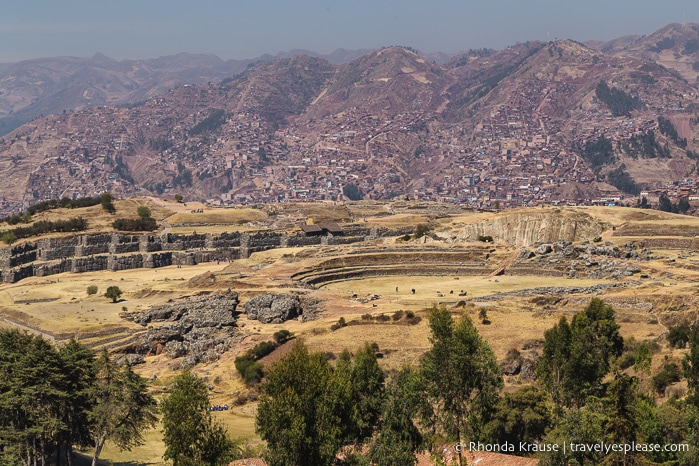
In between frequent breaks and gasps for air, I hoped that the effort would be worthwhile and Sacsayhuaman would live up to its reputation of being the most remarkable Inca site near Cusco.
Thankfully, it did!
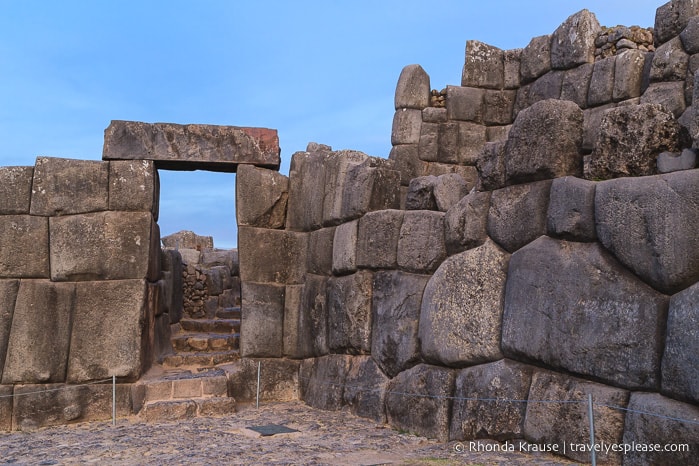
At the top of the hill we were met with a stone wall built in the style the Inca were known for. Large, precisely cut stones of various shapes fit tightly together like a jigsaw puzzle, no mortar needed.
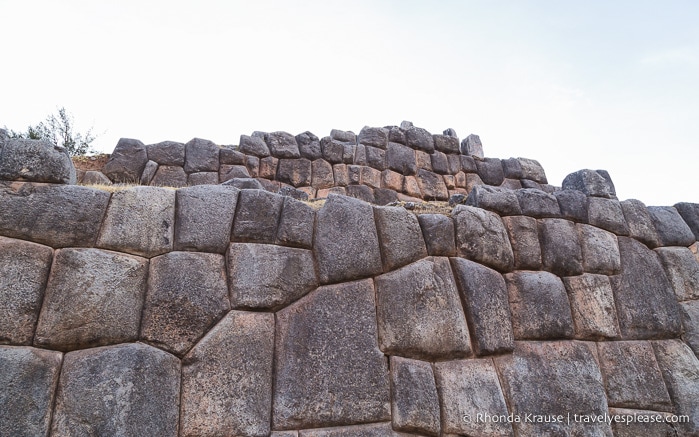
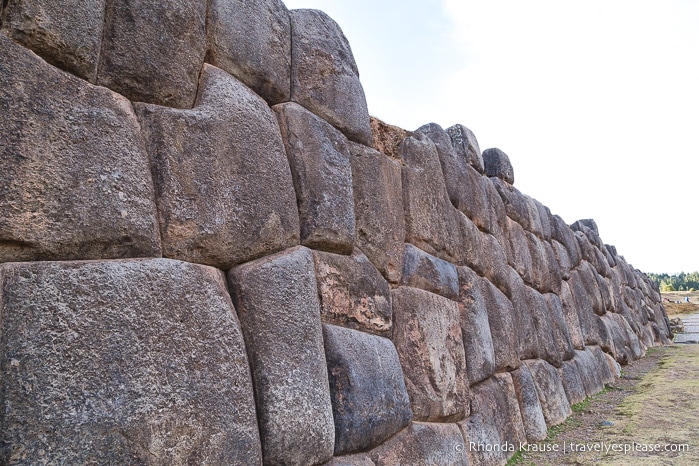
I’d heard a lot about Inca stonework and how big some of the blocks were (one stone at Sacsayhuaman weighs over 300 tons), but seeing is believing. We weren’t even inside the archaeological site yet and were astounded by what we saw.


After buying our tourist ticket we excitedly entered the fortress-temple complex, eager to explore Sacsayhuaman before the sun went down.
Our Self-Guided Tour of Sacsayhuaman Fortress
The Sacsayhuaman archaeological site is divided into three different zones- the walled fortress/military section, the parade ground, and the Rodadero which is believed to be the religious/ceremonial section.
The first area of Sacsayhuaman we visited was the 3-tiered fortifications. Built in a zigzag pattern, these 22 walls represent the teeth of a puma, Sacsayhuaman being the head of Cusco’s famous puma shape.
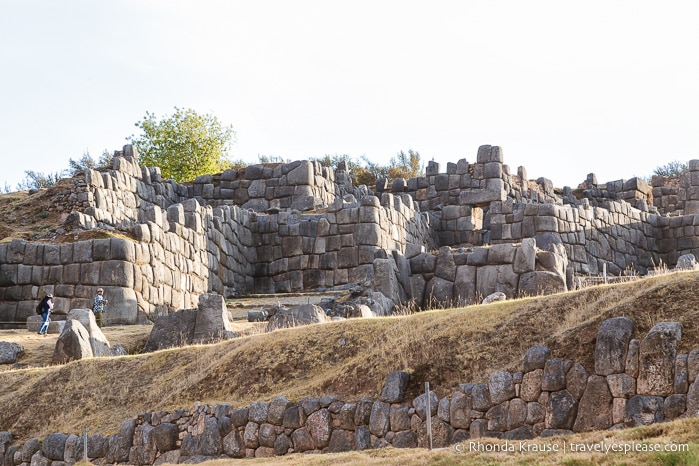
We spent a lot of time in the military area admiring the stonework as questions flooded our minds.
Where did these rocks come from? How did the Inca shape them? How long did it take to build?
Of course we can never know for sure, but it was fun to discuss some possible theories.
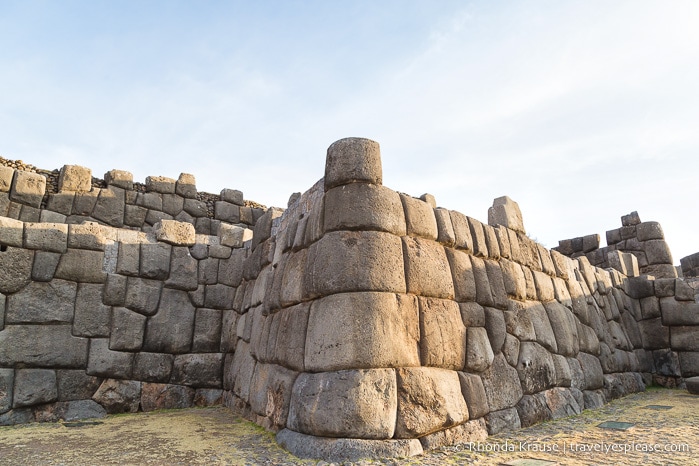
Walking further along the way we soon came to the Intipunku, a gate of impressive proportions and my personal favourite spot in Sacsayhuaman.
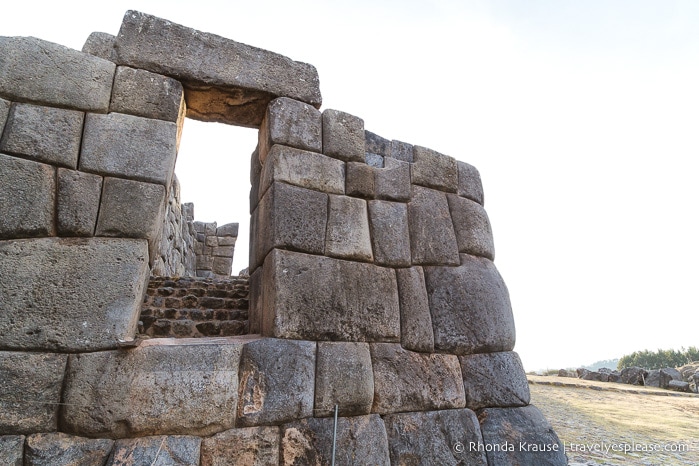
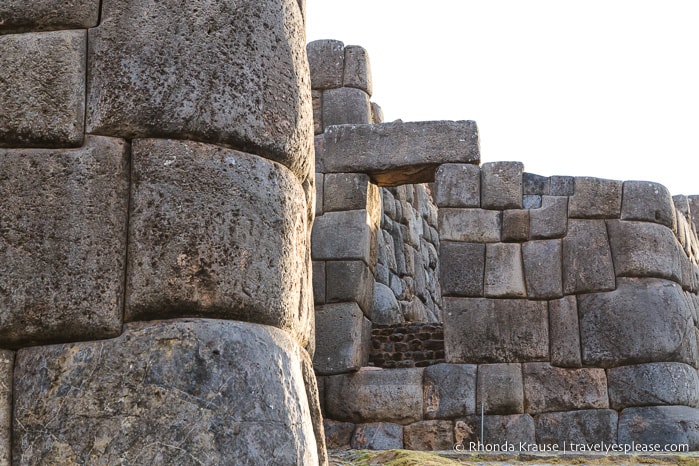
Passing through the terrace gateway, we followed the stone steps up a level where we could see clear across the parade ground to the Rodadero hill. It looked especially striking in the golden glow of late afternoon sun.
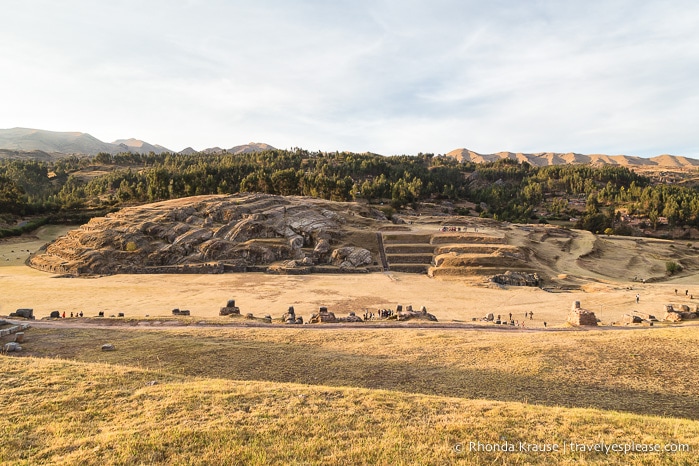
Continuing to walk throughout the Inca fortress, we soon came to a viewpoint overlooking Cusco. We could see all of Cusco’s important landmarks- Plaza de Armas, La Catedral, and Iglesia de La Compañia de Jesús.
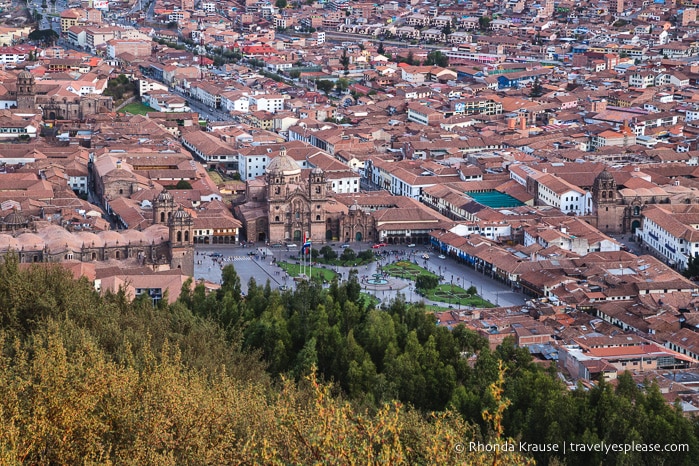
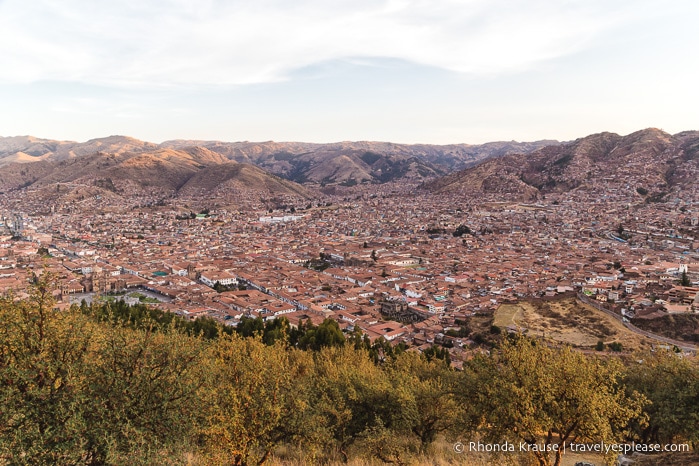
After taking in the view we headed back towards the Sacsayhuaman ruins to enjoy an elevated perspective of the walls before heading down to the large parade ground.
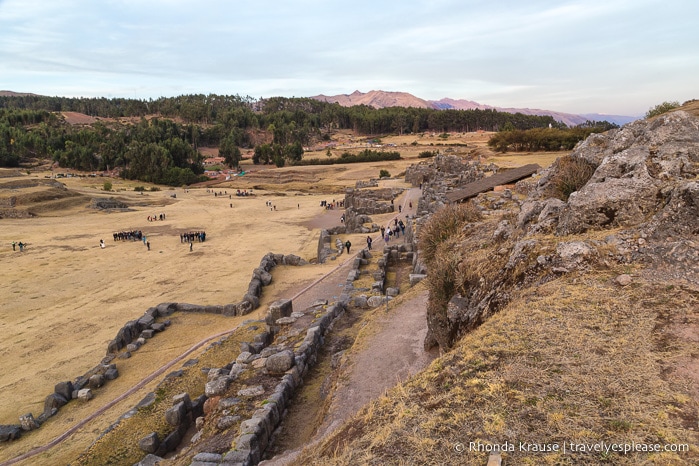
Once on the other side of the field we climbed up the steps of Rodadero, getting to see the zigzag fortifications from afar. The sheer length of the walls was just as impressive as the blocks used to build it.
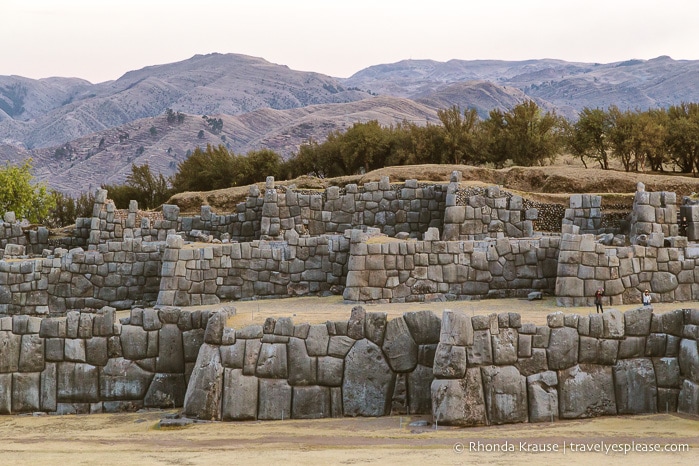
Most of the structures that once were at Rodadero were torn down by the Spaniards and later inhabitants of Cusco, but you can still see the retaining walls. For us, the best thing about this area of Sacsayhuaman was the view. It was a wonderful place to watch the sky change colour as the sun set on our first day in Cusco.
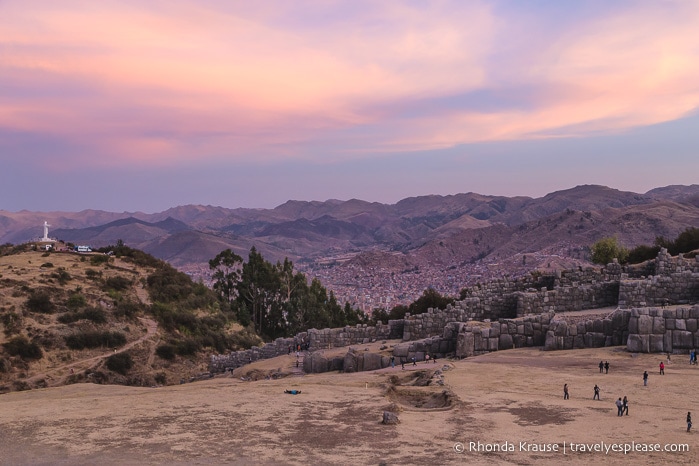
Final Thoughts About Our Visit to the Sacsayhuaman Ruins
Of all the ruins near Cusco, the Sacsayhuaman fortress was the most monumental one we visited. The stonework alone made the uphill walk worth it, never mind the unique zigzag shape of the walls. It was a great site to observe the preciseness of Inca architecture and design, even if the location wasn’t as dramatic as other Inca ruins such as Pisac or Machu Picchu.
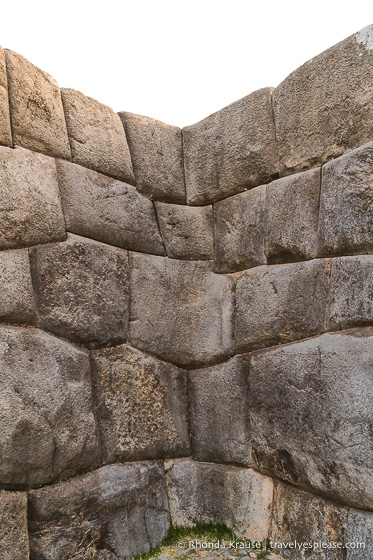
Since we visited Sacsayhuaman without a guide we may have missed out on a deeper understanding of the site’s significance, but the benefit was that we could explore at our own pace. Still, I wish we had arrived a little sooner so we had more time to wander around Rodadero before the site closed.
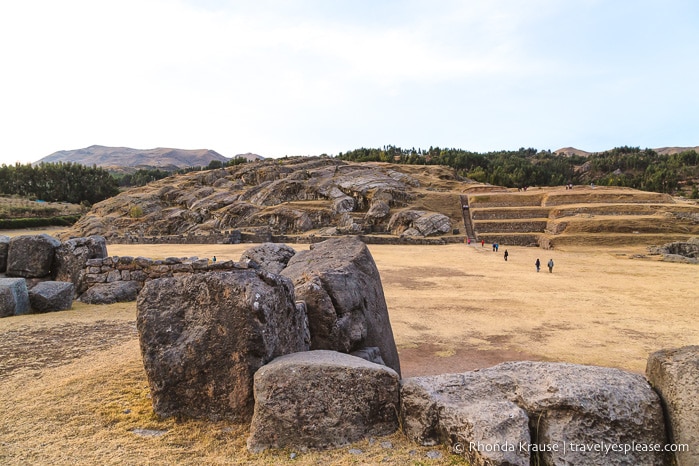
Even if you’re only in Cusco for a short stay, you should make time to visit Sacsayhuaman. It’s definitely a must see in Cusco!
History and Interesting Facts About Sacsayhuaman
- Sacsayhuaman was constructed in the 15th century during the reign of Pachacuti and his successors. It was the largest structure built by the Incas and said to have capacity for at least 1,000 warriors.
- The name Sacsayhuaman means “Royal Eagle”.
- The longest of the three terrace walls is about 400 metres. The walls are approximately 6 metres tall.
- During the siege of Cusco (1536- 1537), Spanish conquistadors gained control of Sacsayhuaman’s terrace walls, then later captured the entire fortress.
- After capturing the fortress, the Spaniards used its stones for building materials, destroying much of the complex within a few years. The blocks were used to build new government and religious buildings and some homes. Only the stones that were too large to move remain at the site.
- After removing most of the stones, the Spaniards covered the site with dirt. Sacsayhuaman was rediscovered during an excavation in 1934.
- Today the site is used for Inti Raymi, a traditional Inca festival celebrating the winter solstice.
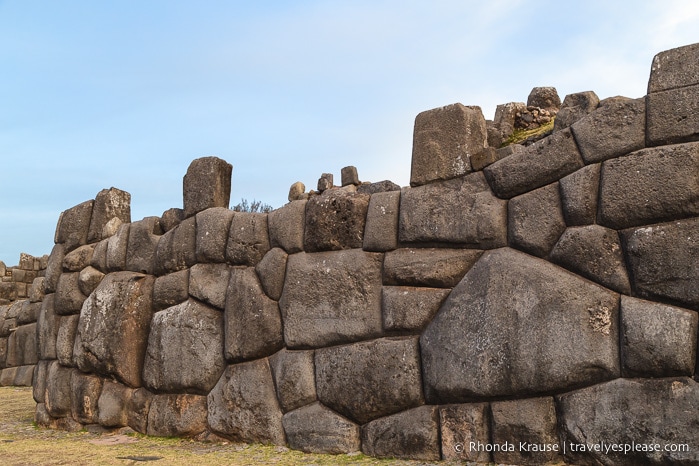
Tips for Visiting Sacsayhuaman Fortress
Location and Getting There: Sacsayhuaman is on the outskirts of Cusco, but you can still walk there in about 30-50 minutes from Plaza de Armas. The uphill walk is easier if you’re already acclimatized to the altitude. The address is Cusco 08002.
Opening Days: Sacsayhuaman is open 7 days a week.
Admission: A Boleto Turistico (tourist ticket) is required to visit Sacsayhuaman. It can be bought at the entrance and used to visit most archaeological sites in the Cusco region. Here is a trusted site where you can buy the Cusco tourist ticket online.
- Before visiting Sacsayhuaman you should have an idea what other attractions you want to see in the Cusco area. The tourist ticket is available in a variety of options that include different sites and days of validity.
Information was updated January 2025, but can change without notice. Please confirm directly with service providers.
Tours of Sacsayhuaman
Here is a trusted site where you can book a tour of Sacsayhuaman. Tours often include visits to other attractions in and around Cusco.
Accommodations in Cusco
For your convenience, here is a list of hotels in Cusco. Please consider booking your Cusco accommodations through the included link. It costs nothing extra and helps support this website. Thank you!
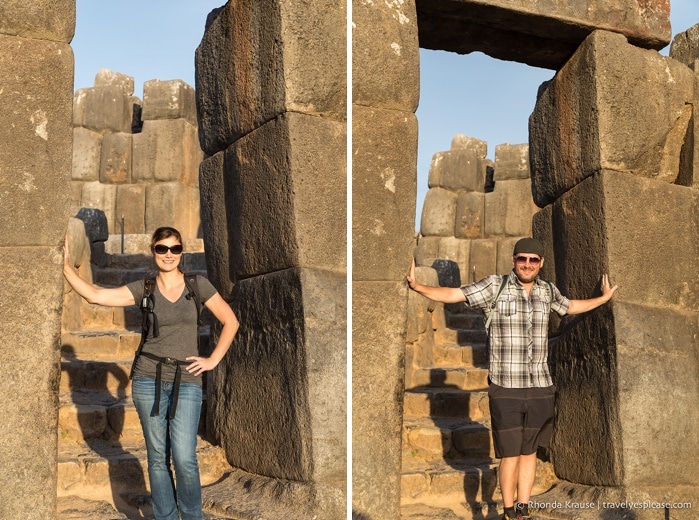
More Peru Destinations and Travel Guides
- Hiking the Inca Trail- What to Expect on the 4 Day Trek to Machu Picchu
- Flying Over the Nazca Lines- Peru’s Mysterious Geoglyphs
- Learning How to Sandboard in Huacachina, Peru
- Visiting the Magic Water Circuit in Lima- A Night of Fountains, Colour and Lights
